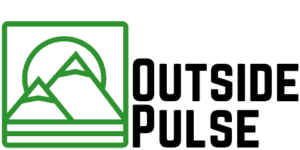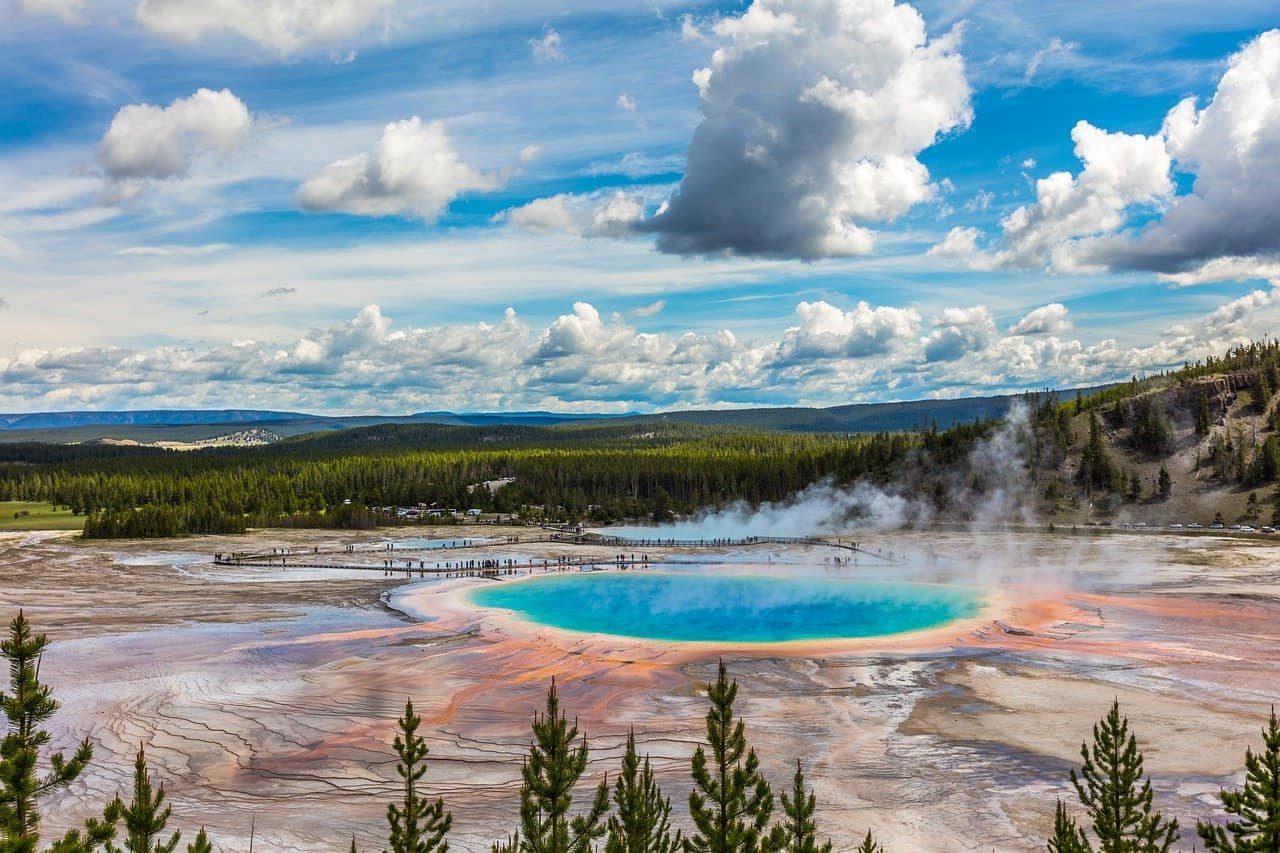If your thinking about camping at Yellowstone National Park this article is a great place to start as these Top 20 Camping Tips for Yellowstone will help you plan your trip and ensure you have a great time while visiting the park.
Yellowstone National Park, which is located in Wyoming is one the largest and most famous National Park’s in the US, encompassing more than 2.2 million acres offering both frontcountry and backcountry camping as well as 12 unique campgrounds and over 2000 campsites.
While entire books have been written about Yellowstone National Park, these Top 20 Camping Tips for Yellowstone should help you learn the basics about the park as well as must-know tips and tricks to maximize your camping experience.
Top 20 Camping Tips for Yellowstone National Park
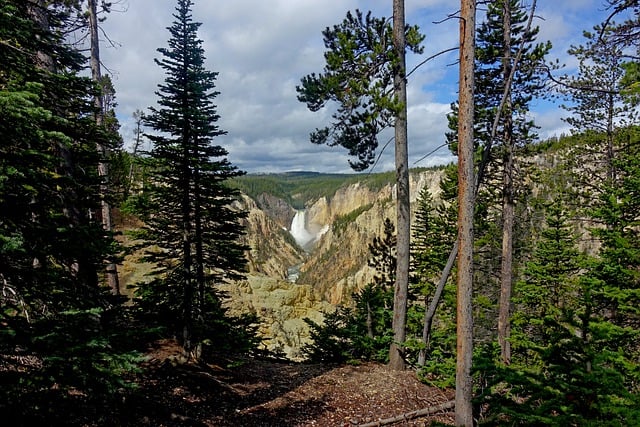
Reserve Your Campsite As Early As Possible
Of the 12 frontcountry campgrounds located in Yellowstone National Park, 5 of them allow reservations ahead of time including Bridge Bay, Canyon, Fishing Bridge RV Park, Grant Village, and Madison.
How to Reserve a Campsite at Yellowstone
Campsites at these reservable campgrounds can be reserved online through the Yellowstone Park Lodges Website.
However, be aware that even though there are over 2,000 campsites at Yellowstone, competition is extremely fierce for these campsites due to the popularity of Yellowstone and the sheer number of visitors to the park each year.
So if you’re planning on reserving a campsite before your visit then you need to be planning and reserving in advance, and when I say in advance I mean far in advance.
As you will need to reserve your campsite months in advance and even as far out as a year in advance if you are trying to reserve a spot in the popular summers months.
Reservations generally open up on the website on May 1st for the following year. Meaning that if you want to reserve a campsite for August 1st, 2021 then you will actually need to make that reservation on May 1st, 2020 in order to have the best chance of reserving the site.
Also, make sure to sign up on the site and pick out the specific campsite you want with maybe a few backups beforehand, that way when the reservations open up at 8:00 a.m. MST you will be ready to go to grab that perfect campsite.
Check for Cancellations
If for some reason you were not able to reserve a campsite far in advance or you’re trying to plan a last-minute trip to Yellowstone don’t fret, because you might just get lucky and find some open reservation spots due to a cancellation.
While cancellations don’t happen all the time they actually happen more than you might think.
In order to have the best chance of grabbing one of these open campsites due to a cancellation, there are several things you can do to give yourself the best chance which are listed below.
- Make sure to check back often on the website.
- Be flexible with your camping and departure dates.
- Don’t be picky on the campsite or campground when looking for cancellations.
- Don’t get discouraged if you don’t find any at first, just keep checking back as cancellations happen all throughout the year.
Get There Early for First Come First Serve Campsites
If you’re planning to camp at Yellowstone National Park at one of their many first come first serve campsites, the phrase the early bird gets the worm is never more true.
While you can get lucky sometimes and find some open spots in the later morning hours at first come first serve campgrounds, this is not usually the case as most spots are usually gone by mid-morning.
If you want to have the best chance of grabbing one of the first come first serve campsites at Yellowstone then it’s best to get to the campground before 7:00 a.m. as the empty campsite will usually fill up by then especially during the busy summer months.
Best Ways to Get a First Come First Serve Campsite at Yellowstone
As with the reservable campsites, it’s best to plan ahead when trying to grab one of the first come first serve campsites.
Don’t wait till the morning of to decide which campground and campsites you are interested in. Instead, it’s best to have a plan and even do a little scouting beforehand if possible, that way when the morning comes you will be ready to go and know where to look first.
Another technique you might want to consider why trying to get a first come first serve site is to divide and conquer, meaning that if you have two or more people in your party, head out separately to try to find that perfect open campsite. This way you will be able to cover more ground and give yourself a better chance of finding a great campsite.
Finally, it’s worth mentioning to not get too stressed out about trying to find a campsite inside Yellowstone National Park as there are many campsites and campgrounds just outside the park that can be a great backup plan in case you aren’t able to find a spot inside the park.
In fact, if you are camping on a budget there are actually free places you can camp just outside Yellowstone.
Yellowstone is Bear Country: Know How to Stay Safe
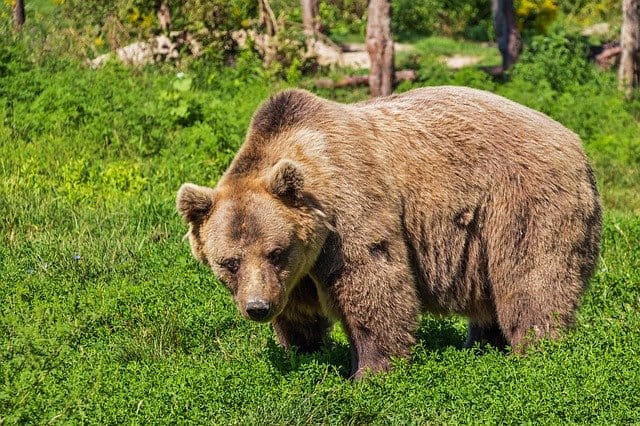
While bear attacks are rare in Yellowstone they do occasionally happen and it’s important to remember that the entire Yellowstone National Park is one big bear habitat. Because of this, it’s important to know how to stay safe in regards to bears and what to do if you happen to encounter one.
While no one can guarantee your safety in a wild environment inhabited by bears, following these tips should help to keep you safe and out of danger when it comes to bears.
Bear Safety Tips
- Most bear attaches occur when a bear is surprised at close range, so one of the best things you can do especially when hiking in Yellowstone is to make a lot of noise, which will typically keep both bears and other wildlife away. One of the best ways to do this is to say “Hey Bear” loudly ever so often so you don’t startle or surprise one at close range.
- While this should go without saying never feed or approach a bear and always give them a wide berth if you do happen to encounter a bear while camping or hiking.
- If a bear approaches or comes into contact with your car the best thing you can do is to honk your horn and drive away.
- Don’t assume that just because you’re in a designated campground and not in the backcountry that you don’t need to worry about bear safety, as bears have been known to enter campgrounds although they are rare occurrences.
- Make sure all food is stored properly in bear lockers while camping.
- Know what areas of the park are closed for bear management by clicking here.
- Always have and know how to use bear spray while camping and hiking in the park. If you don’t have a can of bear spray click here to check out our favorite bear spray on Amazon.
If you’re not sure how bear spray works check out this super helpful video on YouTube for a great tutorial.
Know the Park’s Camping Rules and Regulations
There are several rules and regulations when it comes to camping at Yellowstone National Park that every camper should know. These rules are in place so that everyone stays safe while camping and can equally enjoy their stay while camping at Yellowstone.
While this is not an exhaustive list of every rule in Yellowstone National Park these are some of the most important and basic rules you should follow while camping at Yellowstone.
Rules for Camping at Yellowstone
- Campsites are limited to 6 people max per site.
- If you are camping between July 1st and Labor Day then you are only allowed to stay a max of 14 days, for any other time of the year you are allowed to stay no more than 30 days.
- Camping and overnight parking is only allowed at designated campgrounds and campsites.
- Check for any campfire restrictions by looking at the campground information boards.
- You cannot reserve a tent campsite if you’re not sleeping in a tent even if your trailer or van fits into the campsite.
- Always store all food in the provided bear box at each campsite for you and your camp neighbor’s safety.
Campgrounds are Not Open Year Round
Before planning your trip to Yellowstone remember that most of the campgrounds are not open year-round and some actually have very short windows they are open for the year.
To help with planning your camping trip to Yellowstone we have included this handy table that shows when each campground is closed throughout the year.
Remember though to always check the National Park Service website by clicking here for the most up to date information as these below dates are subject to change.
Yellowstone National Park Campground Closed Dates
| Campground | Dates Closed |
| Bridge Bay | September 8th – May 14th |
| Canyon | September 21st – May 21st |
| Fishing Bridge RV Park | Closed for 2020 Season Until Mid September |
| Grant | September 14th – June 4th |
| Madison | October 19th – April 30th |
| Indian Creek | September 15th – June 11th |
| Mammoth | March 24th – April 7th |
| Norris | September 29th – May 14th |
| Pebble Creek | September 29th – June 14th |
| Tower Fall | September 7th – June 4th |
| Lewis Creek | November 2nd – June 14th |
| Slought Creek | October 14th – June 14th |
Always Filter Your Drinking Water
While most campers will bring bottled water or other beverages if you do choose to drink water from Yellowstone’s natural sources then you must filter the water before drinking to keep you safe and healthy while camping and hiking.
No matter how clean and refreshing the water might look it can be dangerous to drink the water unfiltered. As oftentimes waters from streams or lakes can contain parasites and bacteria as well as animal or human waste so don’t risk it and always filter your water.
There are many ways to purify drinking water including boiling, filtering, and chemically treating the water. However, one of our favorite ways to purify and filter water while hiking or camping is to use the Lifestraw Person Water Filter or the Lifestraw Go Water Filter Bottle which you can check out on Amazon by clicking on the link.
Never Feed or Approach Wildlife
While camping and hiking in Yellowstone National Park never feed or approach wildlife as this can be dangerous for you and potentially harmful to the animal, even if you have good intentions.
There are 4 main reasons why it’s a bad idea to feed or approach wildlife while in Yellowstone which are listed below.
- It makes animals lose their natural fear of humans which can lead to animals approaching humans which can be both a nuisance as well as a safety concern.
- Feeding animals from vehicles is a bad idea because it’s dangerous to people, animals, and personal property. If animals learn that vehicles are a source of food they might get hit by a moving vehicle or try to enter vehicles in search of food.
- Human food is typically not good for wild animals as it lacks the nutritional quality they need and can even be harmful to the animal depending on the ingredients of the food.
- Animals that begin to depend on humans for food can cause injury to people and themselves as it breeds competition and scarcity among groups of animals.
Stay on Boardwalks and Trails Around Thermal Areas
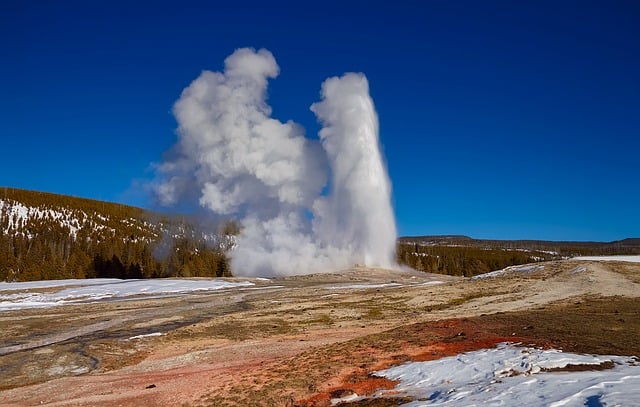
While thermal areas such as the Old Faithful Geyser in Yellowstone National Park are both amazing and awe-inspiring make sure you stay keep your distance and stay on the designated trails and boardwalks while exploring theses area to prevent injury or even death.
Yellowstone has over 10,000 hydrothermal features throughout the park and while the ground may look solid around these features it oftentimes is just a thin-crust with superheated water below.
These superheated waters are often hot enough and ascitic enough to cause permanent injury or death if you were to break through the thin crust and fall into them. So play it safe and always stay on the trails and boardwalks around hydrothermal areas.
Also, as a side note for the safety of dogs and pets, they are not allowed around thermal areas or the surrounding trails and boardwalks.
Know the Rules on Pets
Pets are allowed in Yellowstone National Park but there are some rules and guidelines that you need to be aware of if you plan to camp with your furry friend.
Rules When Camping with Pets
- Pets must be under control at all times and must be either in a crate or on a leash no longer than 6 feet long.
- Dogs and pets are not allowed on the trails, boardwalks, backcountry, or thermal areas.
- Pets are not allowed to be left unattended or tied to a tree or any other object.
- Owners must bag all pet waste and dispose of it properly.
- Carrying or crating your animal in restricted areas for pets does give you an exemption, as they are still not allowed in these areas even if you’re carrying them or crating them.
Be Prepared for Cold Weather Even During the Summer Months
When camping in Yellowstone it’s important to be prepared for all weather conditions and to dress in layers even during the summer months.
Many first time Yellowstone campers are often surprised at how cool or cold it can get at night even during the summer months, especially in September when it’s not uncommon to see the first snowfall.
Average daytime temperatures at Yellowstone during the summer months range between 70 and 80 degrees Fahrenheit while nighttime temperatures can fall well below 40 degrees Fahrenheit.
So make sure when you’re camping at Yellowstone you bring cold-weather gear and clothing no matter what time of year it is and dress in layers so that you can shed layers when it gets warm and add layers when it starts to get cold.
Campfires at Yellowstone
All campgrounds at Yellowstone National Park have a fire ring with the exception of Fishing Bridge RV Park, however just because your campsite has a fire-ring doesn’t necessarily mean you can have a campfire.
This is because during the warm and dry summer months there can be a fire ban in place when campfires are not allowed.
To check the status of potential fire bans the best place to check is the national park service website or informational boards at your campground.
Also, in regards to firewood, some campgrounds do sell firewood but not all do. And even if the campground you are staying at does have a firewood kiosk, they are often only open for limited hours between 6:00 to 8:00 p.m.
In case your campground doesn’t sell firewood though or you miss the window when the campground firewood kiosk is open don’t worry though, as you can always pick up firewood at most stores and gas stations inside the park.
Keep All Your Food in Bear Proof Boxes

While we briefly touched on bear-proof boxes when discussing bear safety it can’t be stressed enough for you and your camping party’s safety to make sure that you store all food and I mean all food inside the designated bear-proof box located at each campsite.
Also, while camping make sure to pick up any food scraps or trash that fell on the ground after each meal and don’t leave any dirty dishes lying around your campsite.
In addition, when not in use don’t leave out water or beverage containers, stoves, grills, coolers, condiments, pet food, or garbage either in tents or truck beds. Instead, make sure to store these items in your car or in a bear-proof box for safekeeping while not in use.
Bring Plenty of Mosquito Repellent
When camping in Yellowstone especially during the spring and summer months it’s important to pack plenty of bug spray to keep those pesky mosquitos away, as they can get quite thick and annoying while hiking and camping.
You might actually want to bring a couple of different cans so that you always have one around when you need it. For example, you could keep one at the campsite to keep them at bay while you’re hanging out, as well as one in your car so you can spray on a heavy dose before heading into the woods for a hike where they can be especially bad.
RVing is Allowed inside Yellowstone but it can be Challenging
Yellowstone is a great spot for RV camping however due to the limited number of sites and the short overall length of many campsites, it can be challenging at times.
If you are looking for full hookups at your campsite the only campground with hookups is Fishing Bridge RV Park which can be extremely difficult to get into without reserving a site far in advance.
Many of the campgrounds do have dump stations however if you get down into freezing temperatures they will be closed.
As far as length goes while there are sites that can accommodate rigs over 40 feet they are far and few between.
In general when it comes to RV length and camping in Yellowstone the shorter you can keep your overall length the better and keeping your length as close to or less than 30 feet will give you the most options when finding an RV campsite in Yellowstone.
There Are a Variety of Restaurants in Yellowstone
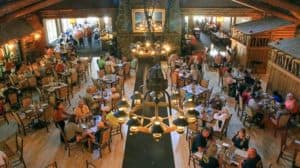
One thing that might surprise you to know is that there are actually a variety of restaurants inside the park itself including everything from fine dining to cafeteria-style restaurants to coffee shops and even ice cream parlors.
All restaurants are located either around or inside the lodges that are scattered throughout the park.
While all the restaurants are great in Yellowstone below are some of the best and most popular places to eat while in Yellowstone.
Best Places to Eat at Yellowstone
- Most Popular – Old Faithful Lodge Cafeteria
- Best Breakfast – M66 Grill at Canyon Lodge
- Best View – Wiley’s Canteen at Lake Lodge
- Most Tasty Burger – Old Faithful Snowlodge Dining Room
- Best Fine Dining – Lake Yellowstone Hotel Dining Room
Always Leave No Trace
While this should go without saying, always make sure you practice the policy of “Leave No Trace” while camping or hiking in Yellowstone National Park.
It’s all our responsibility to keep these protected lands that we camp and hike in beautiful not only for the next camper but also for future generations of campers so that everyone can continue to enjoy the beauty and serenity that Yellowstone has to offer.
Consider Visiting the Park in the Off-Season
While Yellowstone encompasses over 2 million acres of pristine wilderness it can get crowded at times with over 3 million people visiting the park each year.
So if you’re looking for a more peaceful and relaxed tripped to Yellowstone you might want to consider visiting the park during the off-season.
In general, if you want to avoid the crowds while visiting Yellowstone you’ll want to skip the popular summer months and avoid visiting the park while school is out.
However, when trying to visit the park during the off-season, do be mindful that much of the park is closed through the winter months due to harsh winter weather and heavy snowfall. So while you do want to avoid the busy summer months, make sure you plan your trip when winter weather and heavy snowfall won’t be an issue.
Don’t Forget About the Park Rangers
An often underutilized resource by campers at Yellowstone are the Park Rangers that are scattered throughout the park.
While the main part of their job is to protect wildlife, natural resource, and visitors while at the park. They can also be a wealth of information about the park and its natural surroundings.
So if you have a question about the park or specific rules, you should ask a park ranger as they are the experts in the park.
Also, consider taking a guided tour or listening in on a class or demonstration put on by park rangers as they are often very informative and entertaining.
Don’t Forget to Schedule Time to Just Relax
Oftentimes when on vacation or visiting a National Park, we feel like we need to see and do everything for fear of missing out. However, this can lead to the visit feeling rushed, hectic, and even stressful.
I mean who can’t relate to feeling like you need a vacation to recover from the vacation you just took?
So while Yellowstone National Park has some amazing attractions and adventures that you should see and go on, don’t forget to schedule some downtime to just relax and enjoy nature.
